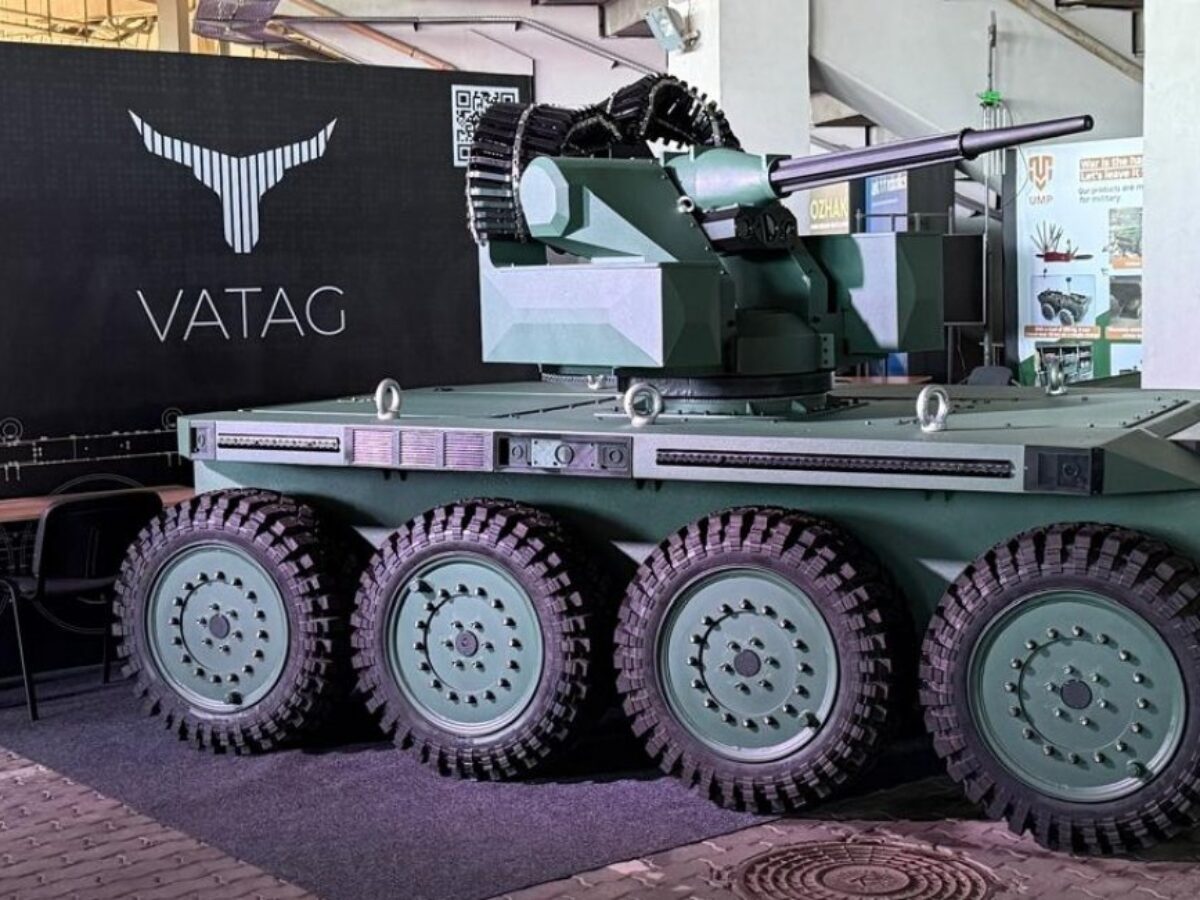By Dylan Malyasov
Copyright defence-blog

Ukraine has presented a new generation of robotic warfare with the debut of the VATAG heavy uncrewed ground vehicle (H-UGV), unveiled at the Brave1 Defense Tech Valley 2025 summit on September 16. According to Defense Express, the system integrates artificial intelligence and advanced control technologies to perform a wide spectrum of battlefield missions. The VATAG is designed as a multipurpose heavy robotic platform capable of carrying more than two tons of payload. Developers highlighted that it can be deployed both for combat roles — including direct engagement and weapons transport — and for logistics, engineering, and other support tasks. As described at the event, the vehicle is powered by a hybrid propulsion unit that combines fuel efficiency with extended endurance. The system can operate in near-silent electric mode for stealth movement, while also serving as a mobile power bank to sustain communications and field logistics. Integrated AI-driven systems provide autonomous navigation and mission management functions, allowing the platform to adapt to changing battlefield conditions. Anatoliy Nikitin, project head for VATAG, said in a statement to Defense Express that the development team’s main goal was “saving soldiers’ lives by transferring risky processes to robotic systems.” He explained that the platform’s design emphasizes autonomy, survivability, and interoperability with existing Ukrainian military equipment. The company noted that VATAG forms the foundation of a broader H-UGV ecosystem. This includes a domestically developed universal combat module armed with a 25 mm automatic cannon, as well as AI-based software and hardware solutions designed to expand autonomy from navigation tasks to elements of decision-making on the battlefield. The roadmap, Nikitin added, envisions greater payload options, expanded compatibility with other systems, and scalability for various mission scenarios. The VATAG incorporates advanced communications architecture to ensure resilience in contested environments. Multi-channel redundant links with automatic channel selection are built in to maintain telemetry and control even under heavy electronic warfare conditions. These features, developers say, ensure the robot remains capable of executing missions despite adversary attempts to disrupt operations. With its heavy payload capacity, modular design, and AI integration, VATAG demonstrates Ukraine’s intent to expand beyond traditional unmanned ground vehicles into fully operational robotic combat platforms. The system is positioned to support light infantry, logistics units, and specialized formations, delivering both firepower and sustainment in contested areas. The introduction of VATAG comes at a time when autonomous systems are increasingly shaping modern military planning, particularly in contested environments where survivability and reduced human risk are paramount.



